Peepers
Kohei Yoshiyuki’s 1970s photos capture peeping Toms raptly eyeing their prey in Tokyo parks.

On view this week at Yossi Milo Gallery, Kohei Yoshiyuki’s pictures from the 1970s of peepers spying on lovers in Tokyo parks are extremely off-putting. We see peeping Toms raptly eyeing their prey; we see some who can’t control themselves and thrust a hand into the works; and we realize that Yoshiyuki was also compelled to be there at the same time, finding his own way in with a tiny camera and an infrared flash so he could snap these Weegee-esque pictures unnoticed.
As critic Vince Aletti writes in his introductory essay for the show, excerpted below:
There’s nothing romantic about this. Because everyone is bent on his own pleasure (her pleasure was another matter; it could not have been much fun for the women involved), the atmosphere in many of the pictures is dangerously feverish; several gatherings appear to be on the verge of a gangbang. If there’s a ritual, religious quality to some of these scenes, others are spinning out of control. The voyeurs stop looking like peep-show geeks and start to resemble shades in Dante’s Inferno.
Kohei Yoshiyuki’s series, The Park, will be on view at Yossi Milo Gallery from September 6 through October 20, 2007. All images © Kohei Yoshiyuki, courtesy Yossi Milo Gallery, all rights reserved.
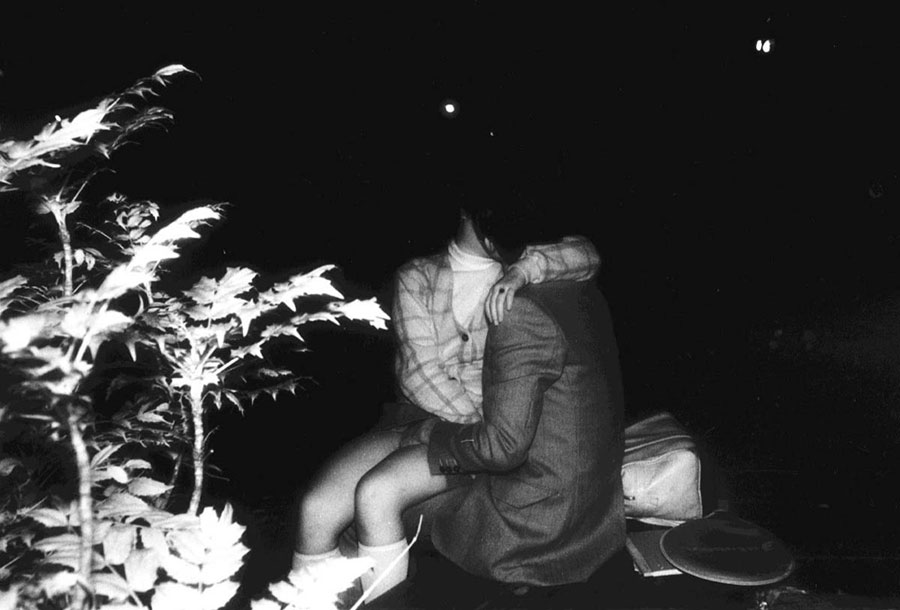
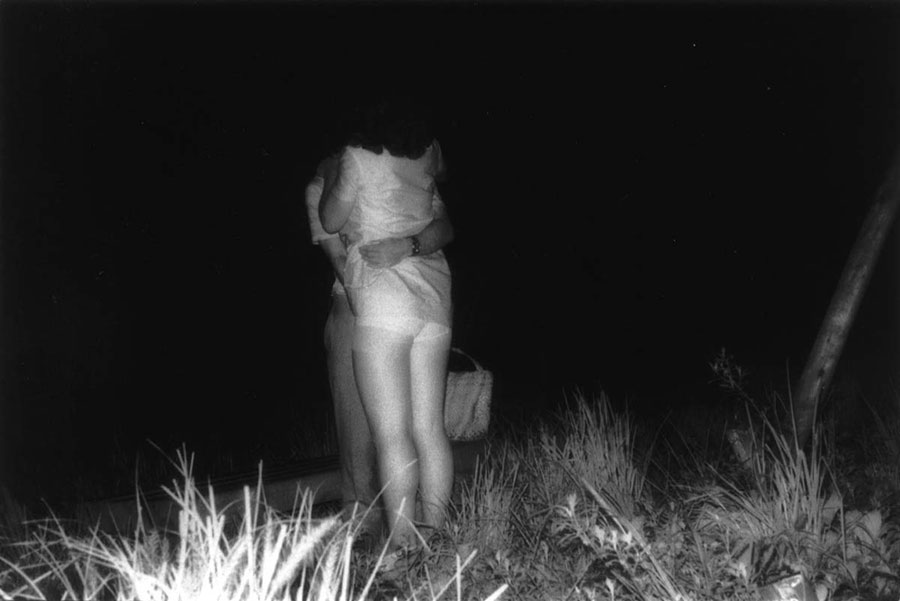
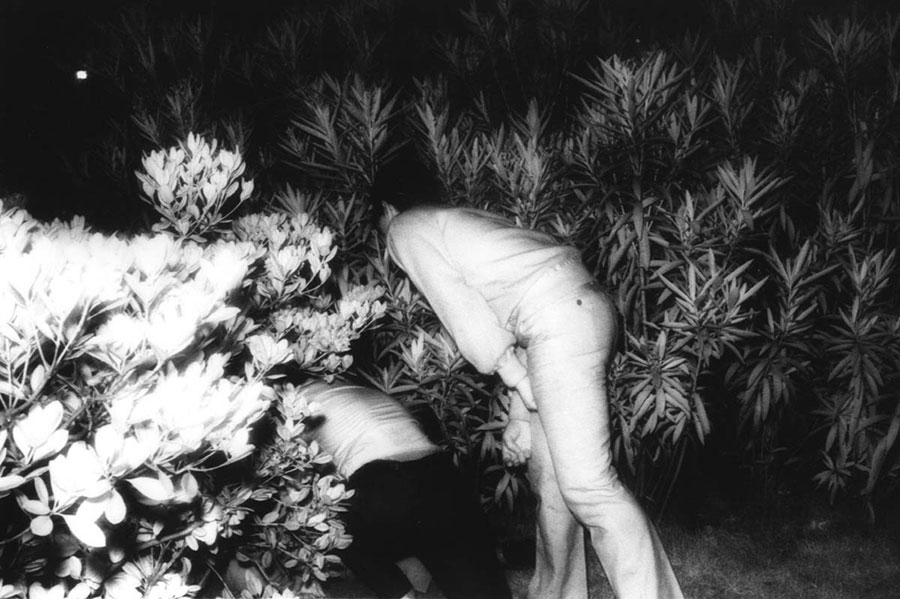
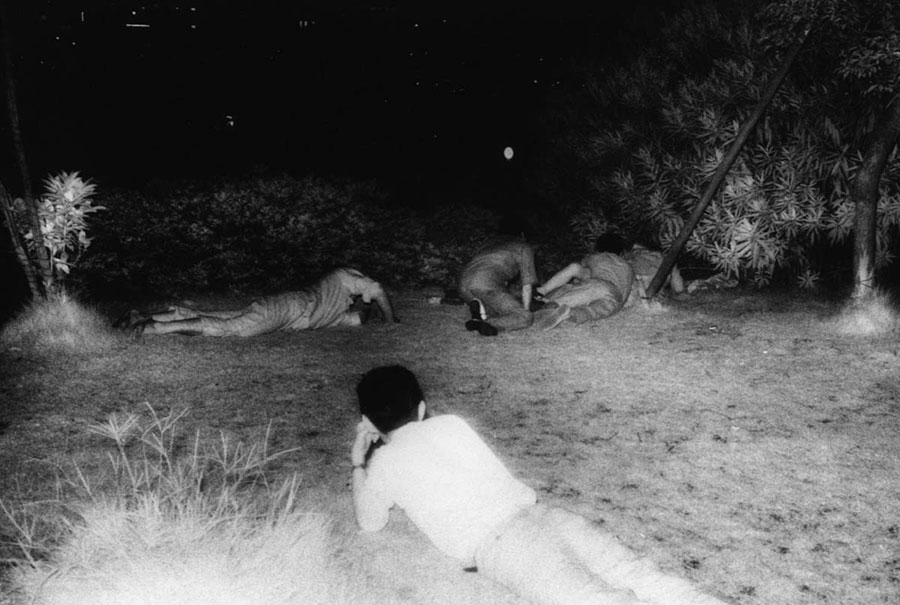
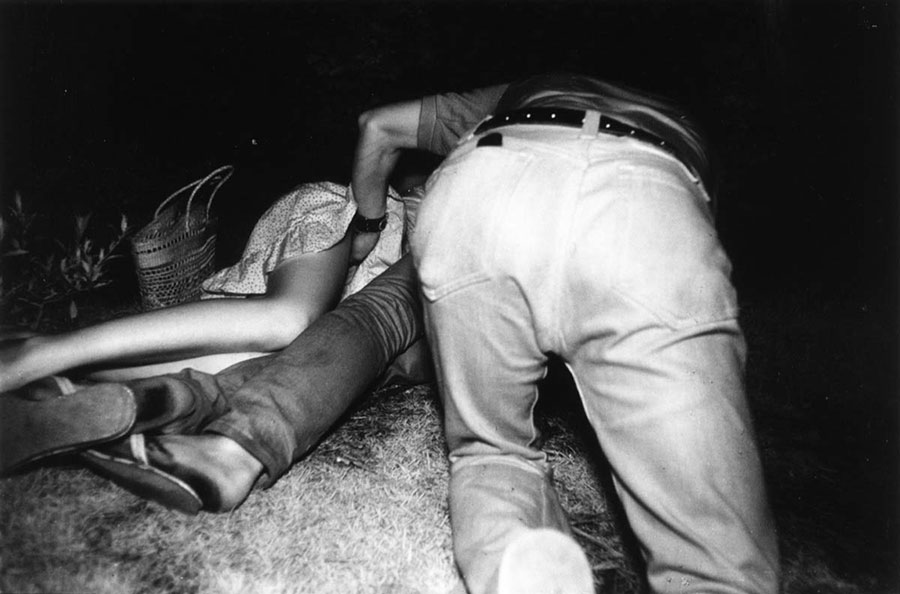
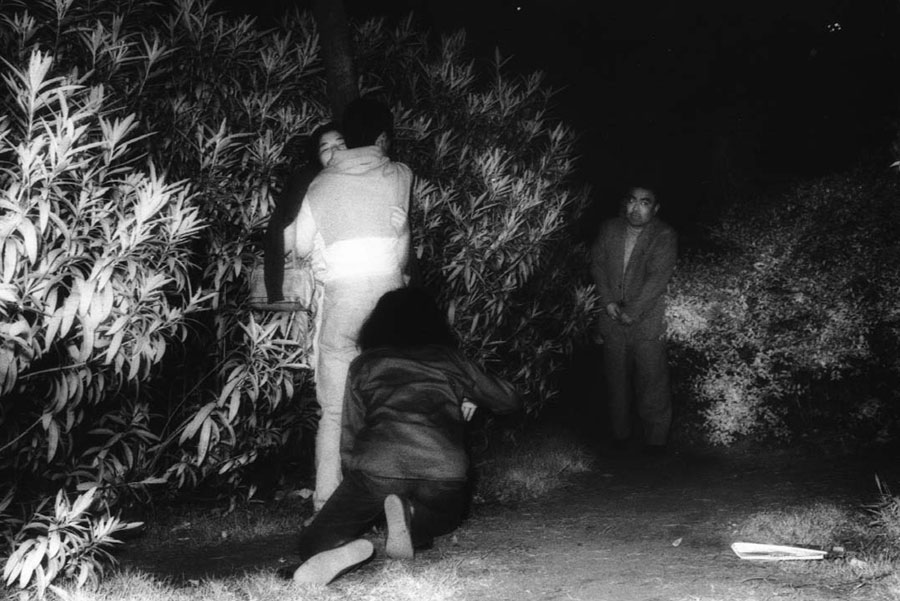
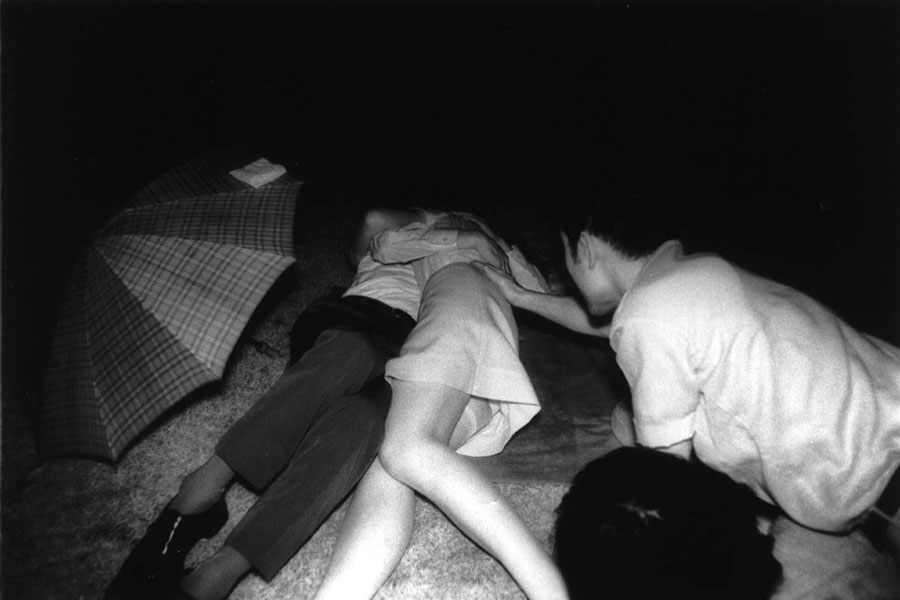
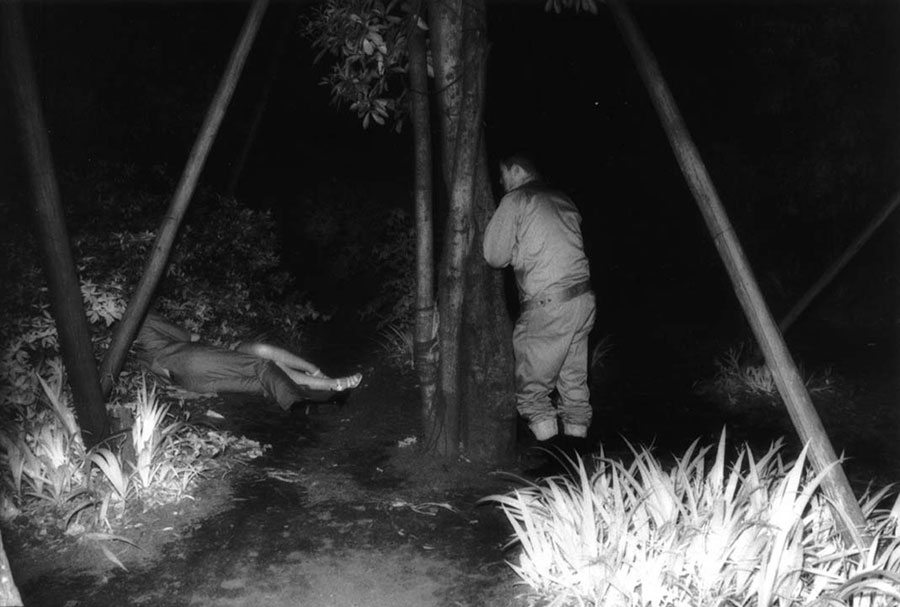

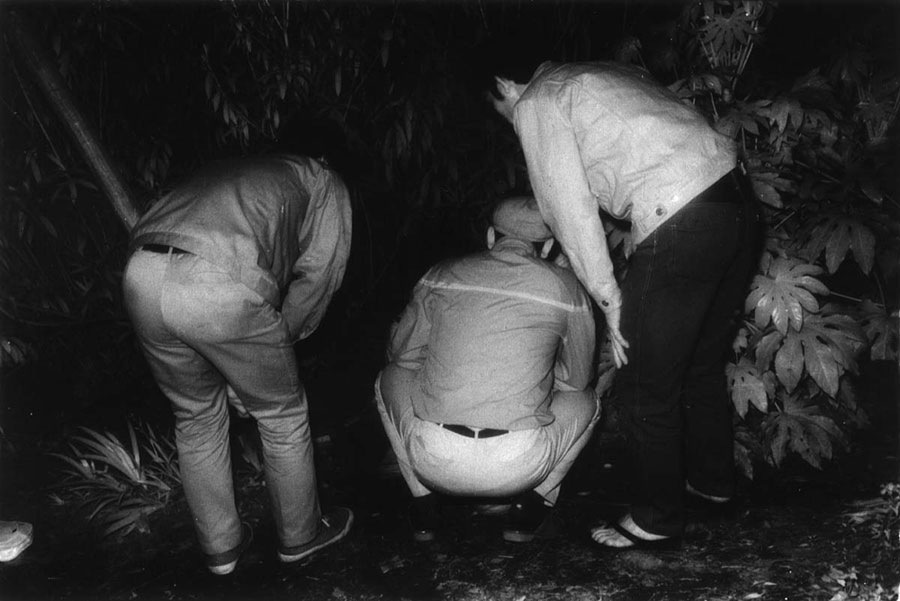
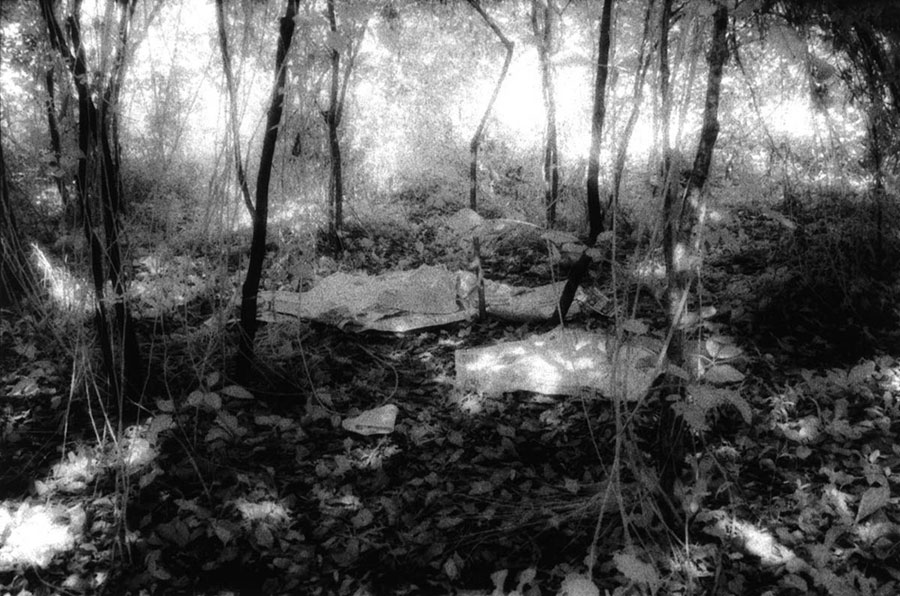
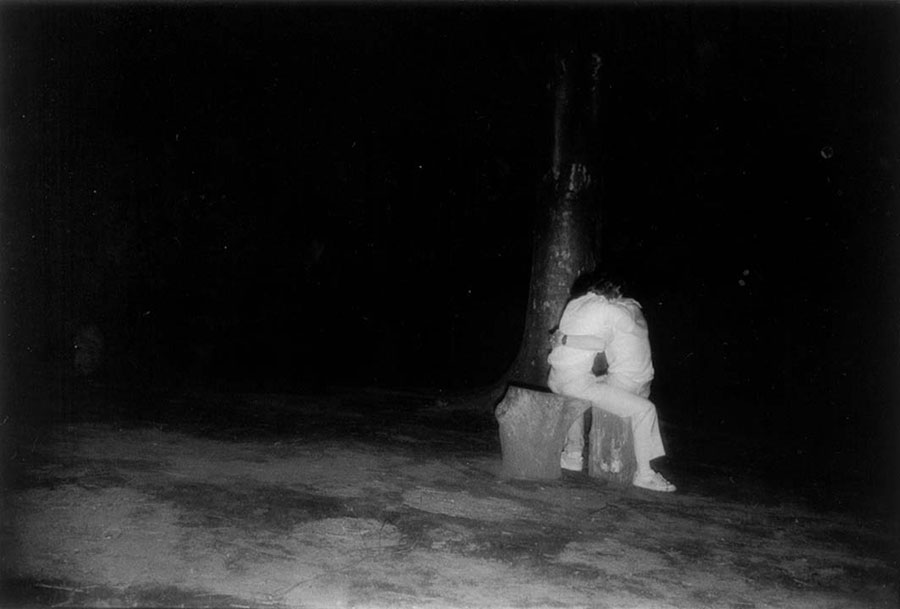
Essay excerpt
Kohei Yoshiyuki’s pictures of the nighttime activities in two Tokyo parks in the early 1970s are among the strangest photographs ever made. It’s as if the photographer has entered into the mind of a dreamer and recorded its wayward, flickering apparitions before they fled back into the deep subconscious. Perhaps Yoshiyuki himself is the dreamer—a sleepwalker stumbling on a private moment and, instead of turning away, becoming mesmerized, like a child at the primal scene. It’s not unreasonable to imagine that his pictures, with their shimmering auras and smudged shadows, don’t just exist on film, but remain seared indelibly on his brain.
But if these are primal scenes, they’re awfully crowded. Even before Yoshiyuki happened upon them, the anonymous, oblivious young couples in these photographs were not alone. Though little more than faceless tangles of half-naked limbs sprawled on the grass, they’re magnets for the furtive attention of men, some of whom hover so close to the action they look like referees at a wrestling match. Others appear to be supplicants, kneeling, nearly prostrating themselves, or crawling like true believers toward a shrine. Some men are so emboldened, so compelled once they get there that they reach out to touch the object of their adoration. One caresses a woman’s buttocks tentatively, worshipfully; another is ruder, thrusting his hand into the crux of several splayed legs.
Yoshiyuki’s photographs are about sex at its most transfixing and compulsive, yet the act itself remains hidden, the focus of every gaze but ours. Although they may have removed their shoes and unzipped their pants, the men, both participants and observers, appear fully clothed. The women, with their skirts and blouses hiked up, are more exposed, but even here the display of flesh is surprisingly discreet. Yoshiyuki shows just enough to seduce the viewer—a tantalizing flash. The work’s erotic charge is generated less by what we see than by what we imagine is going on. We may not be scrambling across the grass and peering through the bushes, but once we begin trying to untangle those limbs (Is that his arm or hers? Is she on top?), we’re no longer innocent observers. Leaning in for a closer look, we’ve joined the lurking voyeurs.
But we’ve also aligned ourselves more dramatically than usual with the photographer himself, whose presence at these scenes can’t be ignored. Watching from the sidelines as his cast assembles, Yoshiyuki is both a patient metteur en scene and our intrepid field guide. He may not have staged these bizarre theater pieces, these pantomimes of desire, but he knows how to frame their improvisations, and he’s not afraid to crouch shoulder-to-shoulder alongside the other voyeurs. Though the grainy immediacy of his images mimic closed-circuit surveillance feed, there’s nothing impersonal or cool about Yoshiyuki’s work. His park pictures recall cinema verité, vintage porn, front-line photojournalism, and the hectic spontaneity of paparazzi shots stripped of all glamour.
The ghostly, overexposed effect of the infrared film and modified flash Yoshiyuki used (in his conversation with Nobuyoshi Araki, he’s circumspect about the technical details, but he apparently attached a filter to his flash that produced the faint red glow he describes) reverses the filmmaker’s day-for-night format; the sky turns pitch black while figures and landscape appear glaringly bright, flash frozen. Weegee used infrared film in the 1940s, most famously for a series of photos in movie houses, including couples necking and people sleeping. His results were notable for the way they sometimes rendered flesh so luminous it seemed transparent and turned heads into skulls with oddly sunken eyes. Yoshiyuki’s technique produced far less macabre results (possibly because he catches very few subjects head-on), but its artificiality is still startling and a little alarming; his flash isn’t a flattering theatrical spot, it’s a searchlight pinning down escaping prisoners, a bare bulb switched on in a room full of scattering rats.
—Vince Aletti
